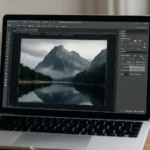Discover how to effortlessly increase the background size of your Photoshop projects, whether you’re a seasoned graphic designer or just starting out. We’ll explore various techniques and methods that will make expanding backgrounds in Photoshop a breeze, allowing you to create better compositions and more professional results.
Are you struggling with how to increase the background in Photoshop? Learn the best tips, tools, and techniques to expand your Photoshop canvas and background with ease in this step-by-step guide.
Photoshop Background Expansion
Expanding the background of your Photoshop design can be essential for several reasons: fitting additional elements, adjusting your composition, or simply providing more space for creativity. Photoshop offers multiple ways to increase the background seamlessly without disrupting the existing content.
1. Use the Canvas Size Tool
The most straightforward method for increasing your background is to adjust the canvas size. Photoshop allows you to resize your workspace, adding pixels to the edges of your image. Here’s how you can do it:
-
Open your project and go to Image > Canvas Size.
-
In the dialog box, you can increase the canvas by adding extra width or height.
-
Adjust the anchor points to specify which area of the image will stay intact, allowing the background to expand.
This method works well for designs that need additional space around the central elements. You can then fill in the new background area with your chosen color, pattern, or image.
2. Use the Content-Aware Fill Tool
Photoshop’s Content-Aware Fill is another powerful feature that helps expand the background in a natural way. It automatically fills empty areas with content that matches the surrounding background, perfect for seamless extensions. Here’s how:
-
Select the area around the image you want to expand.
-
Right-click and choose Fill, then select Content-Aware from the dropdown.
-
Photoshop will fill the area with pixels similar to the surrounding background, making it look like a natural extension.
This tool is particularly useful when you want to maintain a consistent texture or pattern in the expanded background.
3. Layer Duplication and Stretching
For complex backgrounds or those with intricate details, duplicating and stretching layers can provide a more customized solution. By selecting a layer, duplicating it, and transforming it to fit the expanded area, you can create an extended background that maintains design integrity.
Call to Action: Want to learn more about using Photoshop’s powerful tools? Explore detailed techniques for expanding your Photoshop canvas below.
👉Explore More Photoshop Techniques👈
Making Photoshop Background
Creating a new background in Photoshop opens up endless creative possibilities. Whether you’re adding a custom background to a photo or designing one from scratch, knowing the best tools to create and expand your background will improve your workflow.
1. Customizing with Solid Colors
One of the simplest methods for making a Photoshop background is using solid colors. Here’s how you can create a clean, professional look:
-
Open a new document in Photoshop and select the Paint Bucket Tool.
-
Choose your desired color and click to fill the background layer.
-
You can also use gradient fills to add depth and variation to the background, creating a more dynamic and visually appealing effect.
2. Using Stock Images
For more complex backgrounds, Photoshop allows you to import stock images or textures. You can then manipulate these images to fit your design:
-
Import the image through File > Place Embedded.
-
Use the Transform Tool (Ctrl+T) to resize and position the stock image within the background.
-
Adjust layer settings such as Opacity or Blending Mode for a more polished result.
By incorporating high-quality stock images, you can create beautiful and professional-looking backgrounds without starting from scratch.
3. Photoshop Brushes and Patterns
If you want to add texture or patterns to your background, Photoshop brushes and patterns can be incredibly useful. There are countless free and premium resources available online, and here’s how you can apply them:
-
Select the Brush Tool or Pattern Stamp Tool.
-
Choose a brush or pattern that suits your design.
-
Paint or stamp it onto the background layer.
This method is great for creating stylized, artistic backgrounds, or adding subtle texture that enhances the overall design.
Call to Action: Want to create unique backgrounds from scratch in Photoshop? Click below for more tips and techniques!
👉Start Creating Custom Backgrounds👈
Photoshop Background Increasing Contents Recognition
One key aspect of expanding a background in Photoshop is ensuring that your new background integrates smoothly with the rest of the image content. This is where understanding the role of background elements comes into play.
1. Maintain Consistent Lighting and Shadows
When increasing the background, it’s essential to ensure that the lighting and shadows remain consistent. If the background expansion is done poorly, it can make the entire image appear unnatural. To avoid this:
-
Use the Dodge and Burn tools to adjust shadows and highlights around the edges of your expanded background.
-
Ensure that any lighting in the image is reflected properly in the new background area.
By doing this, you can ensure that the image looks cohesive and that the background extension doesn’t look out of place.
2. Use Layer Masks for Precision
If you’re merging a new background with existing elements, Layer Masks are invaluable for blending edges and smoothing transitions. A layer mask allows you to non-destructively erase parts of a layer, blending the new background seamlessly with the rest of the image.
To apply a layer mask:
-
Select the layer that contains your background.
-
Click on the Add Layer Mask icon at the bottom of the Layers panel.
-
Use a soft brush to paint on the mask, carefully blending the new background into the existing composition.
3. Enhance with Adjustment Layers
For complex images, you can use Adjustment Layers to fine-tune the color and tone of the expanded background. This is essential for achieving perfect consistency in your design:
-
Add an Adjustment Layer such as Hue/Saturation or Levels above the background layer.
-
Modify the settings to ensure that the expanded background matches the overall color scheme of your image.
Call to Action: Ready to master advanced techniques for background recognition in Photoshop? Click below to dive deeper into professional photo editing.
👉Learn Advanced Background Integration👈
Conclusion
Increasing the background in Photoshop is an essential skill for any designer or photographer, whether you’re working on a portrait, product image, or digital artwork. With the right tools and techniques, expanding your canvas or adding new elements to the background can help you create stunning compositions and achieve your desired visual impact.
Remember to always consider the overall design, lighting, and elements that make your image stand out. With these skills in hand, your Photoshop projects will shine brighter than ever before!






